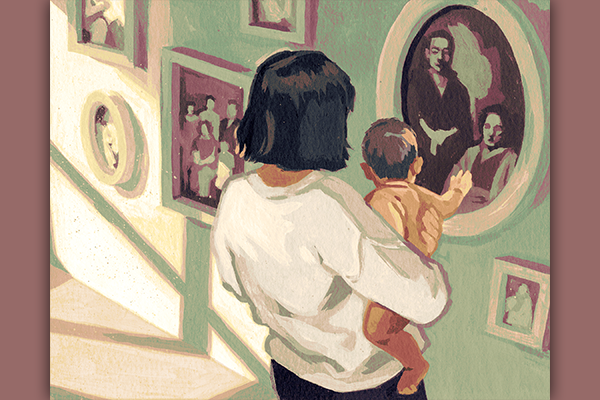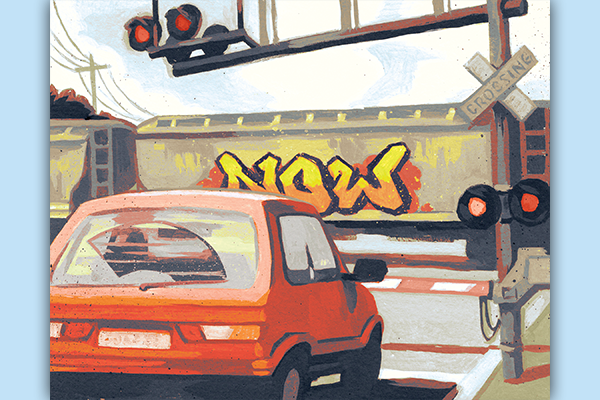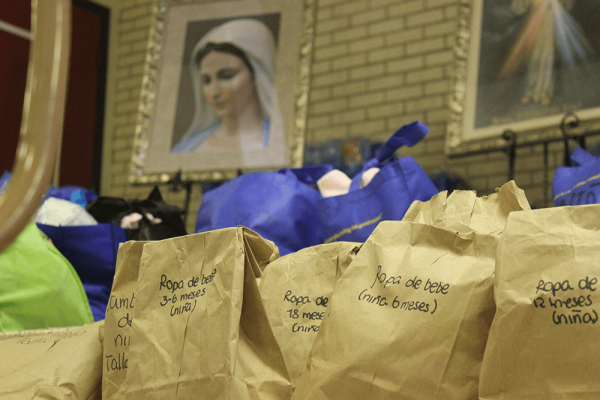IN THE AUGUST issue of Sojourners, Ph.D. candidate and writer Céire Kealty highlights the spiritual significance of the desert in the Christian tradition and why the clothing dump in the Atacama Desert should be a concern for ethicists, environmentalists, and theologians alike. Editorial assistant Liz Bierly spoke with Kealty about her research, the ethics of today’s garment industry, and how readers can take action to combat clothing waste. Read Kealty's full feature.
This interview has been edited for length and clarity.
Liz Bierly, Sojourners: From your undergraduate studies to your ongoing Ph.D. candidacy, you’ve concentrated on religious studies and theology. What drew you toward this path?
Céire Kealty: I was raised in the Catholic Church and attended parochial school [starting in] kindergarten, so I have had a long-standing fascination with religion and theology. It was through my childhood education, the materiality of my faith, and my proximity to the natural world that I came to realize the numinosity cradling the world. I was convinced that Holy Mystery permeates all, especially the most mundane parts of our lives.
This may come as a surprise given my childhood and my C.V., but I had no plans to study academic theology. I began college as a business major! I bought and sold vintage and designer clothes as a part-time gig before college, so business school seemed like a wise place to land.
Luckily, I attended a liberal arts college, where I had to complete humanities courses as part of the core curriculum. I remember the first religion class I took: I learned about Catholic social teaching alongside Sr. Helen Prejean’s anti-death penalty work. I couldn’t get enough of the readings and class discussions, so I sought out more and more religion classes. By the end of my sophomore year, I had declared a second major in religious studies.
Throughout college, I maintained these twin interests in business and religion, with special attention given to the garment industry. I knew I couldn’t abandon these interests and go off to an accounting firm. I had seen how my interdisciplinary studies had complexified my interest in clothing, and revealed striking insights about consumption, community, and responsibility. I wanted the space to “play” with these insights and share my findings with others– and graduate school gave me that space.
What will be the focus of your Ph.D. dissertation?
I’m really interested in exploring the affective resonances of garments, what they reveal or “make present” to people, and the implications of these presences. This interest has been long-standing for me. My mother is Irish, and most of my family lives in Ireland, so I’d only get to see these relatives during the summer months. To soften the separation, we’d write letters and send parcels. I was most comforted by hand-me-down items I’d receive from my aunts and other relatives. There was something to these well-loved and worn garments that consoled me and made my loved ones more proximate.
When the pandemic began, my aunts sent along several more garments to ease the continued pain of separation. The consolation brought by these garments made me think about the power of presence, writ large on our clothes. I wanted to examine this concept more closely from the perspectives of Christian ethics and spirituality, and other theoretical frameworks, and see where I land.
As you work to bring awareness of the ethical and physical harms of the garment industry, what brings you hope?
I have been encouraged by the influx of policy developments related to the industry that have been introduced or passed since 2020. The Garment Worker Protection Act (Bill SB-62)’s passage in September 2021 changes workers’ pay from piece rate to hourly— a big deal in the domestic garment industry. New York also has two bills in the works— The Fashion Sustainability Act and The Fabric Act. Both hold promise for improving the treatment of workers and the planet. It's been wonderful to see momentum build around dignifying policy initiatives, and to watch elected officials join hands with garment workers and advocacy groups.
I’m also encouraged by the awareness and activity growing among everyday shoppers and citizens. Consumers do hold power and can pressure brands to act better.
How can readers take action in their lives after reading about the Atacama Desert?
I need to preface my answer with this truth: corporations hold more responsibility than we do for clothing waste, excess stock, and other industry ills. Brands might like to convince us otherwise, but it’s not all on our shoulders. The united actions of individuals matter, but need to be joined with collective movements geared towards systemic change. This is where accountability campaigns, policy, and organizing become paramount.
Still, we can benefit from restructuring our relationship to our clothes. The problem of Atacama is borne of excess. We as a culture are embedded in hyper-consumptive models of purchasing, presented as normative by brands that churn out thousands of new garments daily. We end up with more stuff than we need, and then don’t know what to do with them. Now, I’m not interested in critiquing parents who run through tons of clothing to fit their growing children, expectant mothers, and people who have lost or gained weight. What I’m concerned with, here, is how impulse purchases and bursting wardrobes have become normalized. I want to encourage readers, then, to resist the allure of excess—in practice, this might look like resisting impulse buys, unsubscribing from retailer e-mails, and choosing to socialize in non-retail spaces. Readers can also modify their purchase practices, choosing garments that are timeless, long-lasting, and less on-trend, so they are more likely to be worn, and less likely to be sent off to the thrift store.
Readers can also vocalize their critiques of excess through policy commitments. Companies need to embrace less quantity in favor of more quality— and consumers can champion “degrowth” by appealing to their elected officials and advocacy groups. I want to encourage readers to connect with like-minded people and organizations. Learning about industry ills can be destabilizing without a support network. To build that network, connect with organizations like Remake, Fashion Revolution, and Garment Worker Center and explore avenues for collaboration. Also, talk to your friends and family.
Finally, I want to encourage readers to hold their favorite clothing brands—or any brands— accountable. It takes just a few seconds to go on social media, and comment under a company’s post, asking: How much do you pay your garment workers? Do you know your workers face inhumane conditions? What are you going to do to make things right?

Got something to say about what you're reading? We value your feedback!







